Located at Coles Bay on the east coast of Tasmania, and overlooks Great Oyster Bay, near The Hazardsare a rugged mountain chain in the Freycinet National Park.
The resort is organic in its relationship to the site and is intentionally evocative of costal forms. However, the form also works with the programmatic requirements of the brief. Essentially the main resort building is entered from the tail and when inside opens into a large volume that provides a panoramic view of the Hazards and Great Oyster Bay.
The reception lounge is on this level with the mid level containing bar, restaurant and lounge areas and lowest level gallery, board room and day spa. Undercover walkways, link the reception building to the suites which are spaced to reveal views through.
The Hazards are a dominate feature of the site and the architecture deliberately blocks and reveals views throughout the whole journey. One of the main challenges of the design was to reconcile the client (and market’s) perception of luxury and still capture elements of the unique Tasmanian context.
The view is important part of this, however, materials, colors, scale and form also contribute strongly. Materials were selected to work on many levels – pragmatic reasons (such as built form, availability and remote construction), their aesthetic associations (vernacular style, natural context, or luxury expectations) and to extenuate spaces or volume.
This was reinforced by a color pallet that was sampled from a close examination of the surrounding landscape. Furthermore, the grandness of the main resort building, which response to the larger context, is counteracted by a more personal and intimate scale in the suites.
Where possible issues relating to sustainable design were considered however this was also balanced against construction issues on a remote site and market expectations for luxury resorts (both in material selection and building services). A major consideration for the project was water usage in what is typically a drought affected area.
New rain water collection & storage infrastructure were built (off site) as part of the project for use by the development and the nearby township as well as sewage treatment facilities. Rainwater from roofs is also collected and re-used in the reflection pools, as well as water efficient devices being specified.
Another important factor, due to the predominately cool climate and south facing site, was heating the resort. All buildings are well insulated and high performance glazing was installed. Energy efficient water heating and air conditioning systems were used. The roof is made from curved Tasmanian wood beams, built in a ribbed structure with ply overlay, which forms a smooth underlay for the Polymea membrane.
Although complex in concept, the build and look of the roof present a very simple view without dominating the entire structure of Saffire Freycinet. The glass used has a very low percentage of reflectivity, allowing for maximum impact when viewing the surrounding coastal beauty both during the day and at night.
Location: Coles Bay, Australia
Architects: Circa Architecture
Project Management: Stanton Management Group
Structural Engineering: Gandy + Roberts
Services Engineering: Wood + Grieves
Facade Engineering: Hyder Consulting
Landscape design: Inspiring Place
Interior design: Chhada Simbiada Interior Design, Circa Morris-Nunn Walker
Area: 3,640 sqm internal + 1,225 sqm outdoor
Builder: Fairbrother Construction
Client: The Federal Group
Photographs: Peter Whyte, George Apostolidis
Web site: Saffire Freycinet Resort

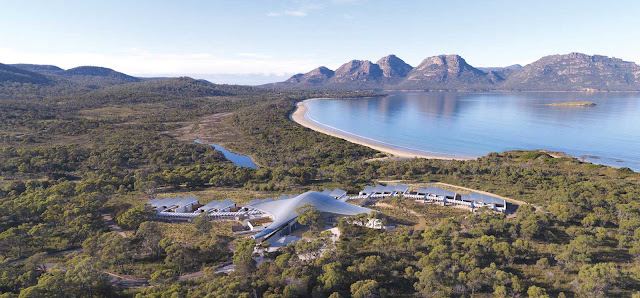
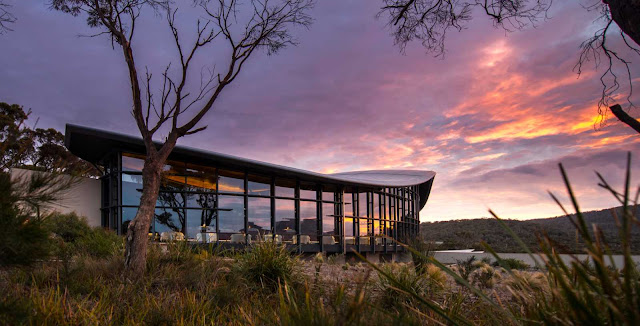
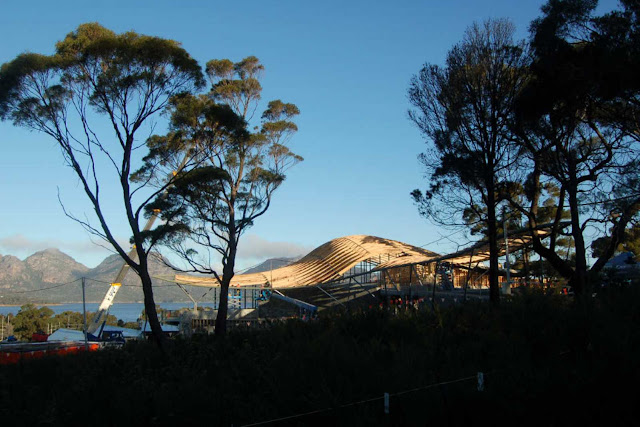
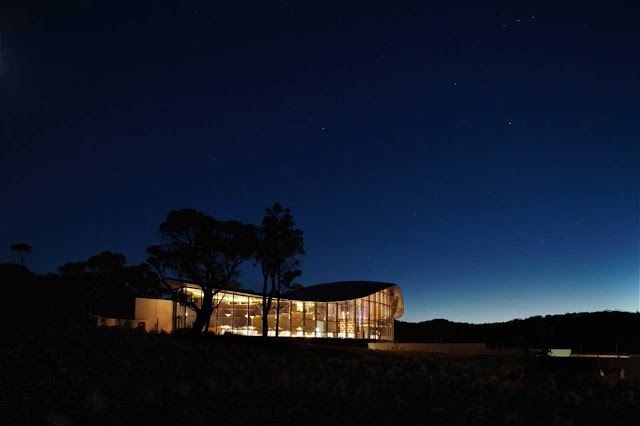

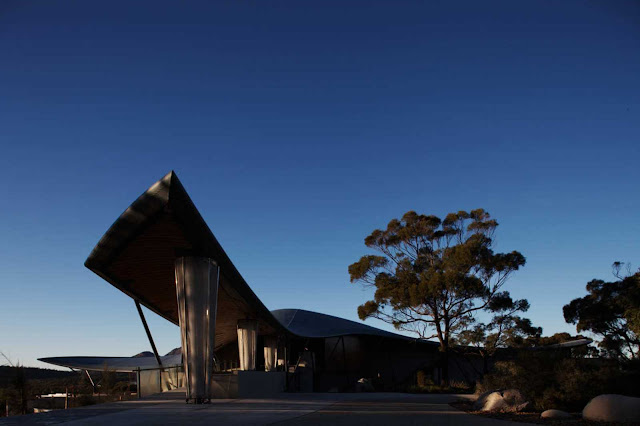

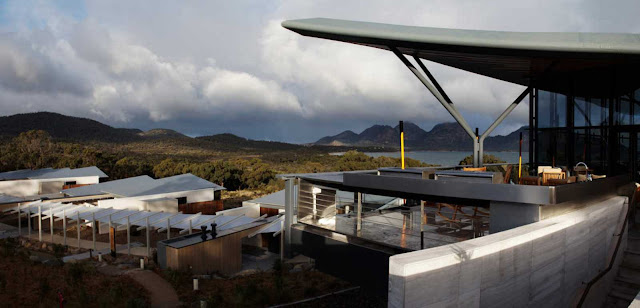
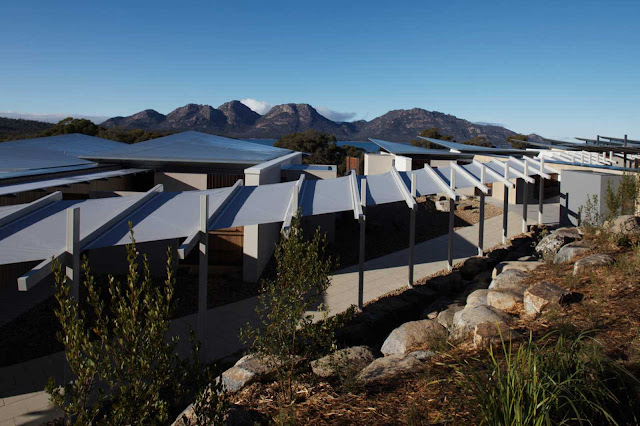

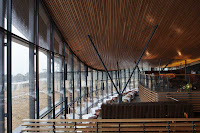
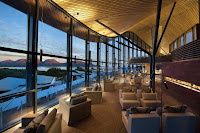


I was just chatting with my coworker about this today at lunch . Don’t remember how we got on the subject in actuality, they brought it up. I do recall eating a wonderful steak salad with cranberries on it. I digress